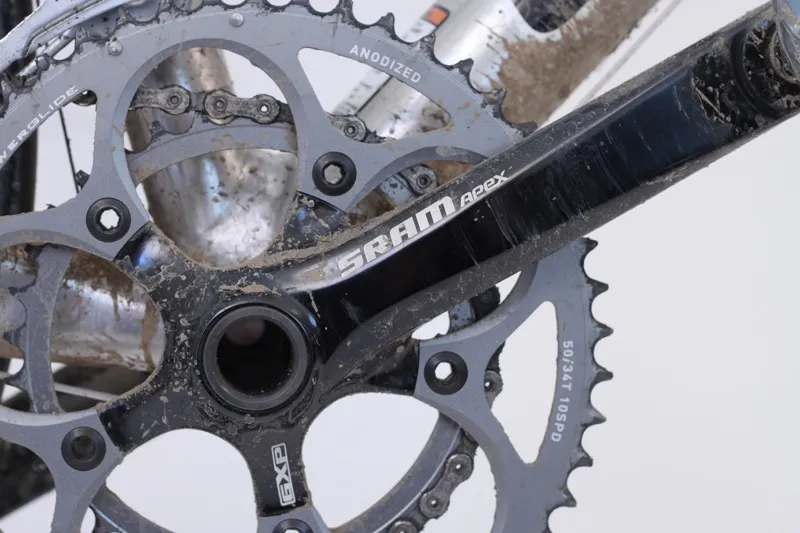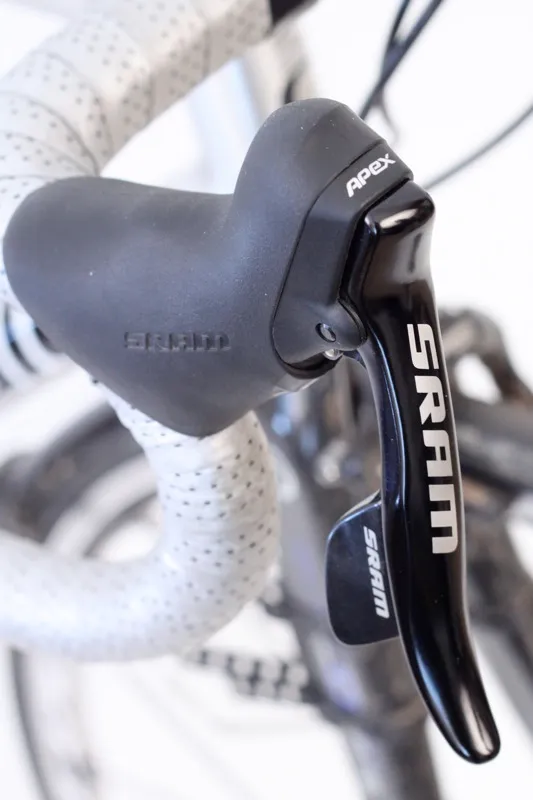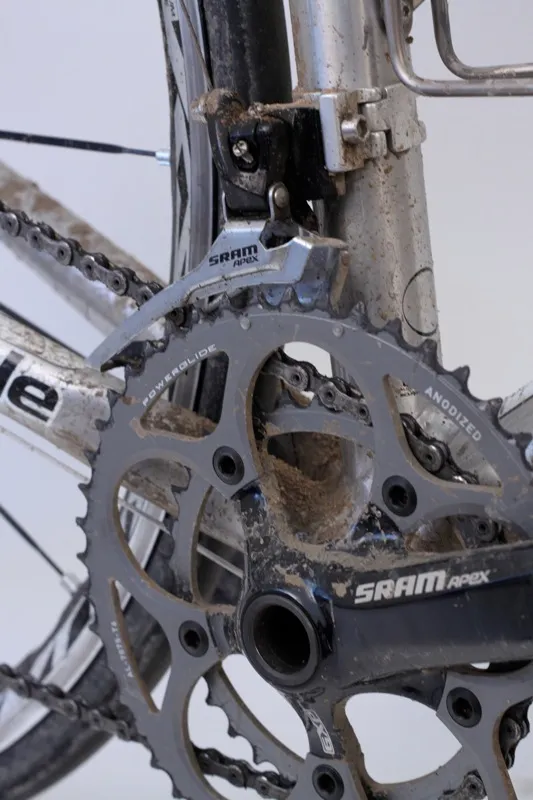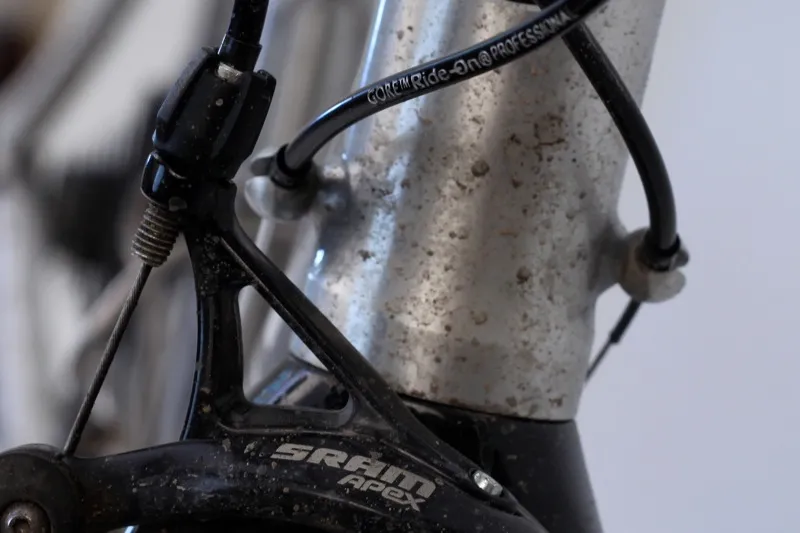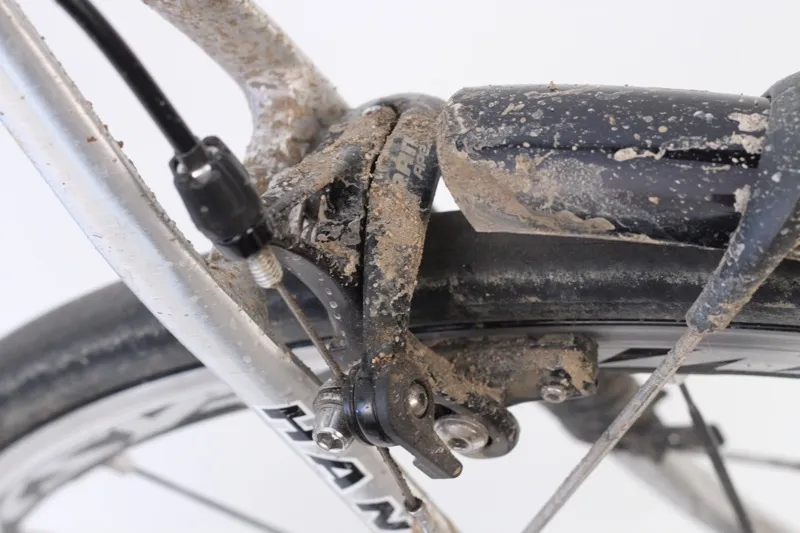The story with the entry-level SRAM Apex group is twofold: it offers an ultra-wide gear range without a triple crankset, and it brings a familiar performance package to a new low price. Since SRAM have been so vocal about Apex’s WiFLi – Wider, Faster, Lighter – properties, we’ll start there.
Our test groupset is of the WiFli variety (a standard version is also available) and made up of a compact 50/34t crankset mated to an 11-32t 10-speed cassette. This package gives the now familiar top gear of 50/11 or 119.9 gear inches and a mountain bike-esque 34/32 low gear or 28 gear inches.
This allows any cycling enthusiast who currently rides a double crankset to scale the steepest of hills with a never-before-experienced ease – albeit quite slowly, depending on one’s ability to maintain a high cadence.
But there is a downside to the wide range. The rider must sometimes sacrifice finding the perfect gear on the flats, due to the cassette’s large – though relatively evenly spaced– differentials from cog to cog. This is especially apparent in that sweet spot between the 19t and 23t cogs.
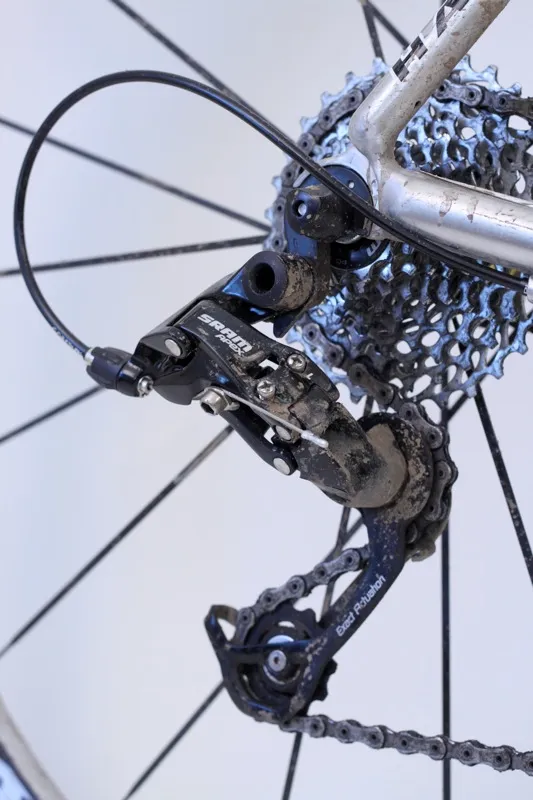
Apex served to launch SRAM's WiFLi concept of an ultra-wide-range transmission that relies on a double crank
After three months on the new group, it's clear that the WiFLi version of Apex is an acquired taste. It may not be for everyone – those living in pancake-flat areas like Florida are particularly unlikely to enjoy riding the wide-range group. But mountain goats – the riders muscling up hour-long climbs in the North American Rockies or Italian Dolomites – will find Apex makes a pretty compelling point.
In these regions, even hardcore enthusiasts and racers will be able to appreciate the concept if they approach it with an open mind; it's something that's driven home by SRAM's competitors, who in some cases offer triple cranksets and nine-speed transmissions within their fourth-tier groups.
The wide range group also has purpose for touring and for those with some sort of drop bar, half mountain, half road Franken-bike. For those hardcore racers who are ‘ballin’ on a budget’, SRAM also offer a standard version of Apex, in which options of a standard length rear derailleur cage, standard 130BCD crank and range of standard cassette ratios are offered.
Shifters & derailleurs: Typical SRAM feel, but watch the cables
Aside from the conductive feel of the alloy brake lever and slightly more plastic used in the shifter’s hood body, Apex’s DoubleTap levers feel and function exactly like the Force or Rival versions. We see Apex as a perfect second group for a winter or rainy day training bike or for a cyclo-cross pit bike, since the ergonomic feel mirrors the rest of the SRAM line.
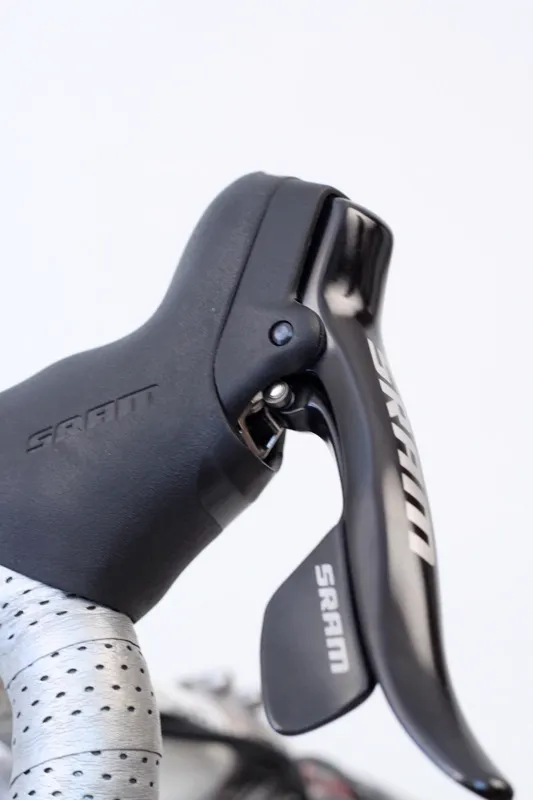
The Apex DoubleTap shifters have all of the bells and whistles of SRAM's other shifters, save for a ZeroLoss rear mechanism
Apex shifters are equipped with a full complement of SRAM’s technologies, including reach adjustments for brake and shift levers, ZeroLoss front shifting and dual cable routing options. Note that Red is the only group with a ZeroLoss rear shifter, while the second-, third- and now fourth-tier groups only offer ZeroLoss for their front shifters.
After just two weeks of testing we found that shifting quality, both front and rear, was beginning to deteriorate rapidly. After assessing the shifters, cables and derailleurs, we concluded that this loss in performance was due to the low quality cables that Apex is equipped with. We switched to SRAM’s Gore Professional Sealed cable kit, which vaulted the shift quality and lever feel to a level superior to that of the shifters when they were new.
Front and rear derailleurs offered little to pick on. The pivots of both came tight and remained that way, which helped to produce snappy shifts.
Brakes: Name brand pads are a bonus, but calipers lack power
While SRAM seem to have skimped on derailleur cables to the detriment of the group’s performance, in other areas they've invested in name-brand parts and materials – namely the SwissStop brake pads. The compound proved to wear well and offered the expected braking feel. However, the system came up slightly short on performance.
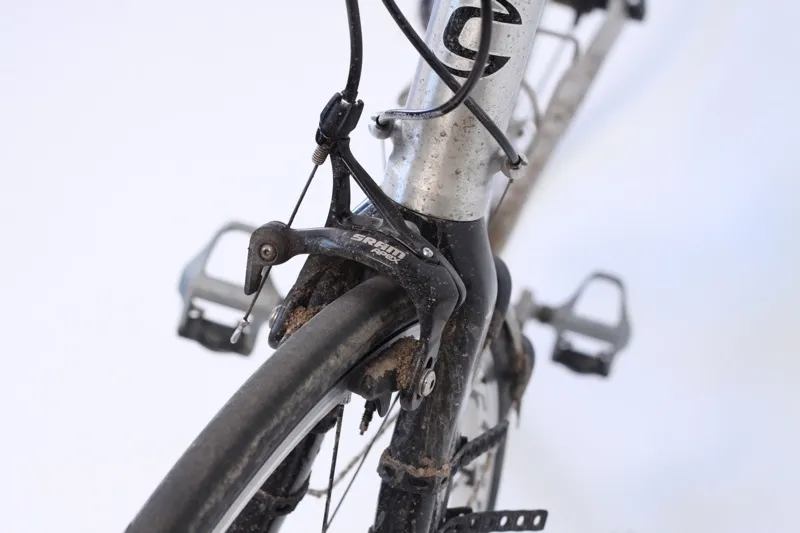
There are SwissStop pads hidden under the grime on our Apex caliper
The Apex caliper lacks the power of Red or Force, and we suspect its downgraded material and design (without internally-skeletonized lower arms) is to blame. We mentioned this to SRAM’s road press manager Michael Zellmann, who encouraged us to again look to the cables as the source. His concern prompted an 11th hour cable and housing change and associated testing.
While there seemed to be a slight improvement – we weren’t able to ride our usual test route due to snow and sub-zero (Farenheit) temperatures – performance was still nowhere near that of SRAM’s top tier groups. We were still able to descend without any problems, but had to compensate for the lack of power by increasing braking distances – by roughly five to 10 percent – and/or using more lever force.
Cranks: Soft feel is the cost of keeping costs down
Inferior construction is also evident in the Apex crankset. While the arms are cold-forged from AL-6061-T6 aluminum they're solid – not hollow – and noticeably softer through the arms and spider than the Rival OCT (Open Core Technology) crank, or any of the brand’s carbon offerings.
The Apex compact crank sports a 147mm Q-Factor and is available in five lengths from 165-180mm. It's available in standard 53/39t, 130mm BCD; compact 50/34t and ’cross 48/34t (both 110mm BCD) chainring combinations.
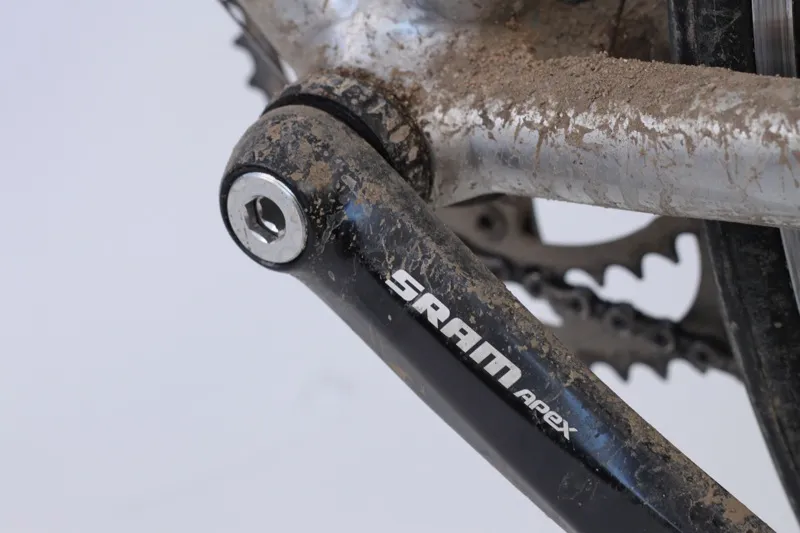
The Apex bottom bracket features SRAM's new Gutter Seal sealing; it ran smooth once broken in and held up perfectly
Weight is a respectable 872g, with the new Apex GXP bottom bracket. This features SRAM’s new gutter seal design, which caused a noticeable amount of drag upon installation but broke in acceptably and held up well during our winter test period.
Chain and cassette: A solid finish
The final two components – chain and cassette – performed flawlessly and proved durable over the course of our test. Yes, there were large – but even – jumps on the 11-32t cassette, which hampered the system’s smoothness, but we didn’t miss shifts and were content with the overall performance.
A couple of notes on the cassette: SRAM offer 10 different models of the PG-1050, and while ours featured the widest range, the sheer number of cog combinations offers the ability to tune the gearing to best fit your local terrain.
You may also notice that SRAM have discontinued their use of the Open Glide design in favor of the older Power Glide technology. On the Apex cassettes, the latter design no longer uses a missing tooth as a shift gate. We found the PG technology to shift just as well as OG, with the benefit of being quieter. OG is now only available on the Red PowerDome cassette.
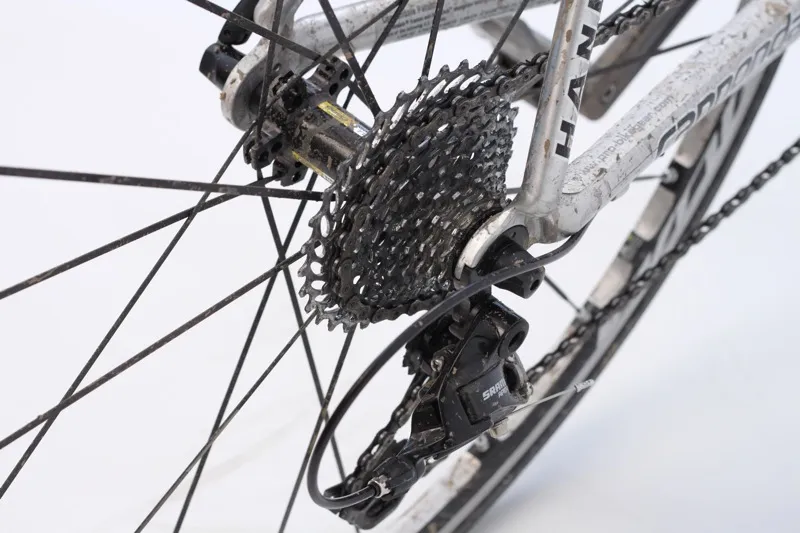
Both chain and cassette performed flawlessly during testing
Conclusion: Apex's strongest Rival
Apex does offer SRAM's lowest price point to date, at US$861. However, that saving comes at the price of detuned performance – particularly when it comes to brakes and cranks – compared to the third-tier Rival group at $1,041. Ultimately, we feel Apex gives up a bit more in performance than it does in price, meaning that Rival offers better value for money.
Upgrading Apex with Rival brakes and cranks would be a somewhat futile exercise, since it would make up $124 of the $180 price difference. And if it's the wide-range gears that appeal, a WiFLi version of Rival is now available. Of course, there will be many out there who can't afford the third-tier group, and Apex does seem to have allowed manufacturers to bring a greater level of performance to new price points.
SRAM Apex stats:
- DoubleTap shifters: 356g; US$375 (£232.23)
- Rear derailleur (mid-cage): 207g; $78 (£48.30)
- Front derailleur (braze-on): 88g; $49 (clamp-on not tested, $57) (£30.34/35.30)
- GXP crankset (compact): 764g; $156 (sold w/BB) (£96.61)
- GXP bottom bracket: 108g (sold w/crank)
- PG-1050 cassette (11-32t): 300g; $90 (£55.73)
- PG-1031 chain (114 links): 283g; $37 (£22.91)
- Brakeset: 313g; $76 (£47.06)
- Group total: 2,419g; $861 (w/braze-on FD) (£533.21)
